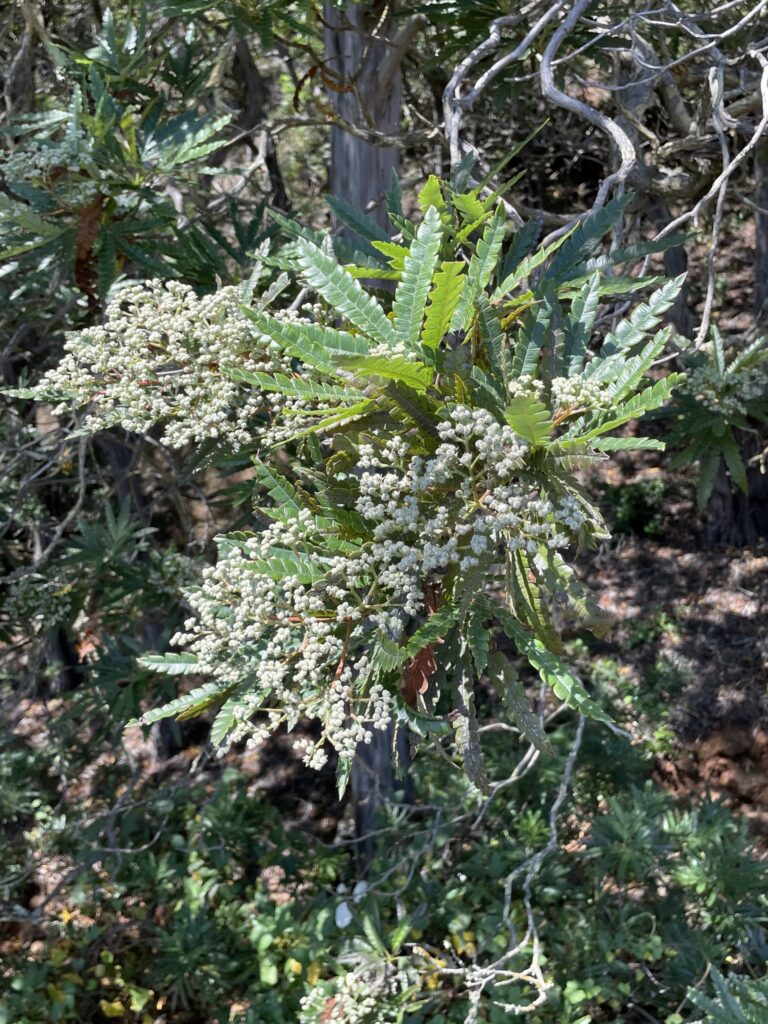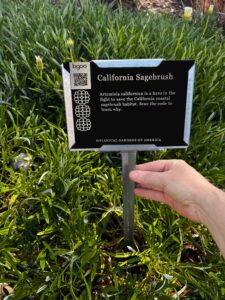A relict or relic species is a species that was once widespread but now survives in an isolated or specialized habitat. Relict species can provide important insights into historical ecosystems and evolutionary processes.
Island ironwood (Lyonothamnus), a tree in the rose family, was first discovered on Santa Catalina Island in 1884 by William S. Lyon. It remains today as a remnant of a species that was once found far and wide across the mainland but now survives only on the Channel Islands.
There are two subspecies:
- Lyonothamnus floribundus ssp. floribundus (Santa Catalina Island Ironwood), found only on Santa Catalina Island has smooth, undivided leaves and is almost never seen in gardens or nurseries.
- Lyonothamnus floribundus ssp. asplenifolius (Santa Cruz Island Ironwood), with toothed, fern-like leaflets, found on Santa Cruz, Santa Rosa, and San Clemente islands. It is found in the chaparral and oak woodlands of the rocky coastal canyons, at elevations from 100-1600 feet. With peeling reddish gray or brown bark and evergreen leaves, it can grow up to 50 ft tall. It is more commonly available in native plant nurseries and used horticulturally.
In 1935, Island Ironwood was adopted as the official tree of Santa Barbara County.

